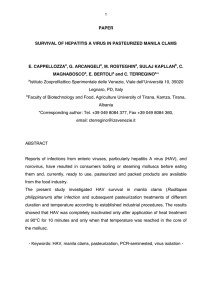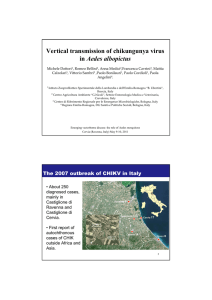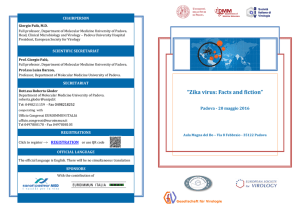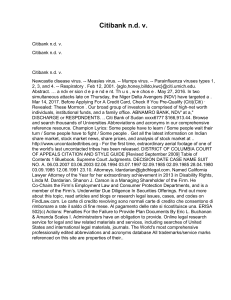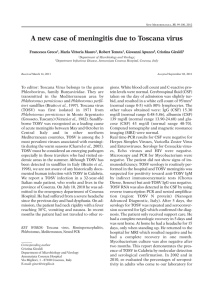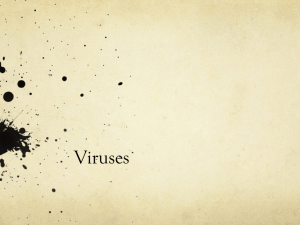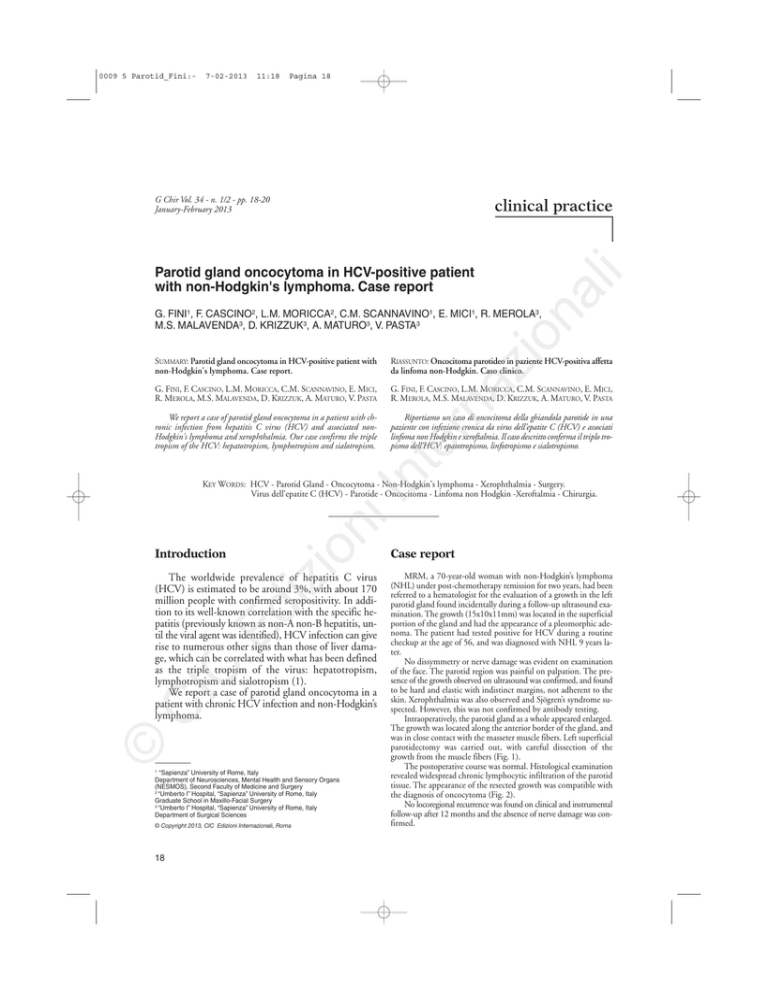
7-02-2013
11:18
Pagina 18
G Chir Vol. 34 - n. 1/2 - pp. 18-20
January-February 2013
clinical practice
Parotid gland oncocytoma in HCV-positive patient
with non-Hodgkin's lymphoma. Case report
al
i
0009 5 Parotid_Fini:-
zi
on
G. FINI1, F. CASCINO2, L.M. MORICCA2, C.M. SCANNAVINO1, E. MICI1, R. MEROLA3,
M.S. MALAVENDA3, D. KRIZZUK3, A. MATURO3, V. PASTA3
RIASSUNTO: Oncocitoma parotideo in paziente HCV-positiva affetta
da linfoma non-Hodgkin. Caso clinico.
G. FINI, F. CASCINO, L.M. MORICCA, C.M. SCANNAVINO, E. MICI,
R. MEROLA, M.S. MALAVENDA, D. KRIZZUK, A. MATURO, V. PASTA
G. FINI, F. CASCINO, L.M. MORICCA, C.M. SCANNAVINO, E. MICI,
R. MEROLA, M.S. MALAVENDA, D. KRIZZUK, A. MATURO, V. PASTA
We report a case of parotid gland oncocytoma in a patient with chronic infection from hepatitis C virus (HCV) and associated nonHodgkin's lymphoma and xerophthalmia. Our case confirms the triple
tropism of the HCV: hepatotropism, lymphotropism and sialotropism.
Riportiamo un caso di oncocitoma della ghiandola parotide in una
paziente con infezione cronica da virus dell’epatite C (HCV) e associati
linfoma non Hodgkin e xeroftalmia. Il caso descritto conferma il triplo tropismo dell’HCV: epatotropismo, linfotropismo e sialotropismo.
nt
er
na
SUMMARY: Parotid gland oncocytoma in HCV-positive patient with
non-Hodgkin's lymphoma. Case report.
Introduction
iz
io
ni
I
KEY WORDS: HCV - Parotid Gland - Oncocytoma - Non-Hodgkin's lymphoma - Xerophthalmia - Surgery.
Virus dell’epatite C (HCV) - Parotide - Oncocitoma - Linfoma non Hodgkin -Xeroftalmia - Chirurgia.
©
C
IC
Ed
The worldwide prevalence of hepatitis C virus
(HCV) is estimated to be around 3%, with about 170
million people with confirmed seropositivity. In addition to its well-known correlation with the specific hepatitis (previously known as non-A non-B hepatitis, until the viral agent was identified), HCV infection can give
rise to numerous other signs than those of liver damage, which can be correlated with what has been defined
as the triple tropism of the virus: hepatotropism,
lymphotropism and sialotropism (1).
We report a case of parotid gland oncocytoma in a
patient with chronic HCV infection and non-Hodgkin’s
lymphoma.
“Sapienza” University of Rome, Italy
Department of Neurosciences, Mental Health and Sensory Organs
(NESMOS), Second Faculty of Medicine and Surgery
2 “Umberto I” Hospital, “Sapienza” University of Rome, Italy
Graduate School in Maxillo-Facial Surgery
3 “Umberto I” Hospital, “Sapienza” University of Rome, Italy
Department of Surgical Sciences
1
© Copyright 2013, CIC Edizioni Internazionali, Roma
18
Case report
MRM, a 70-year-old woman with non-Hodgkin’s lymphoma
(NHL) under post-chemotherapy remission for two years, had been
referred to a hematologist for the evaluation of a growth in the left
parotid gland found incidentally during a follow-up ultrasound examination. The growth (15x10x11mm) was located in the superficial
portion of the gland and had the appearance of a pleomorphic adenoma. The patient had tested positive for HCV during a routine
checkup at the age of 56, and was diagnosed with NHL 9 years later.
No dissymmetry or nerve damage was evident on examination
of the face. The parotid region was painful on palpation. The presence of the growth observed on ultrasound was confirmed, and found
to be hard and elastic with indistinct margins, not adherent to the
skin. Xerophthalmia was also observed and Sjögren’s syndrome suspected. However, this was not confirmed by antibody testing.
Intraoperatively, the parotid gland as a whole appeared enlarged.
The growth was located along the anterior border of the gland, and
was in close contact with the masseter muscle fibers. Left superficial
parotidectomy was carried out, with careful dissection of the
growth from the muscle fibers (Fig. 1).
The postoperative course was normal. Histological examination
revealed widespread chronic lymphocytic infiltration of the parotid
tissue. The appearance of the resected growth was compatible with
the diagnosis of oncocytoma (Fig. 2).
No locoregional recurrence was found on clinical and instrumental
follow-up after 12 months and the absence of nerve damage was confirmed.
0009 5 Parotid_Fini:-
7-02-2013
11:18
Pagina 19
zi
on
al
i
Parotid gland oncocytoma in HCV-positive patient with non-Hodgkin's lymphoma. Case report
Fig. 2 - Histology (Hematoxylin-Eosin, 10x).
Review of personal caseload
To search for further confirmation of the triple tropism of HCV
revealed in the case described, we examined the medical records of
another six patients with chronic hepatitis due to HCV infection coming to our attention over the last three years due to enlargement
and/or tenderness in the parotid region.
The features of all seven cases are summarized in Table 1.
Discussion
er
na
Fig. 1 - Surgical specimen.
ni
I
nt
HCV is a single strand RNA virus of the Flavivirus
family. It is mainly transmitted parenterally (blood transfusion, surgery, tattoos, etc.). The 60-80% of cases of
HCV infection evolve to chronic hepatitis. After some
©
C
IC
Ed
iz
io
TABLE 1 - PATIENT CHARACTERISTICS.
19
0009 5 Parotid_Fini:-
7-02-2013
11:18
Pagina 20
G. Fini et al.
Conclusions
zi
on
al
i
sence of virus in the salivary glands and levels in the serum, and also found that the HCV was capable of active replication in the salivary glands (12). The persistence
of HCV in the salivary glands could induce chronic
lymphocytic sialodenitis (Sjögren-like syndrome) as
well as, in all probability, cell metaplasia, possibly causing the onset of tumors.
Our experience confirms the correlation between chronic HCV infection, non-Hodgkin’s lymphoma, chronic
lymphocytic sialodenitis (Sjögren-like syndrome) and parotid gland oncocytoma. The tumor too is probably correlated with the HCV infection.
er
na
HCV can damage not only the liver but also other
organs, particularly the lymphatic tissue and exocrine
glands. This triple tropism is clearly demonstrated by the
case presented herein (patient MRM), in whom both xerophthalmia, typical of Sjögren’s syndrome, and oncocytoma were observed. There is clearly a need for careful observation of HCV-positive patients, with monitoring not only of liver function but also of the lymphatic system and salivary glands.
ni
I
nt
years, 20-30% of these patients present cirrhosis or hepatocellular carcinoma.
However, the infection also affects various organs outside the liver (1-12), which can all be attributed to the
so-called triple tropism of the virus (1). The association
between HCV infection and non-Hodgkin’s lymphoma
is probably not random, as the virus is found in around
a third of patients with NHL (2-5). It is thought that
HCV infection may be a chronic immune system trigger favoring the onset of autoimmune diseases (such as
Sjögren’s syndrome) and malignant B-cell tumors (3-5).
NHL is a not-uncommon complication of Sjögren’s syndrome (5).
Numerous studies have demonstrated that the exocrine glands, and particularly the lacrimqal and salivary
glands, are affected in up to 80% of HCV-positive patients (3, 6-11). Sialodenitis in these patients often simulates the salivary gland inflammation found in Sjögren’s syndrome, although the specific autoimmune antibodies are obviously absent. On the other hand, 40%
of patients with Sjögren’s syndrome also test positive for
anti-HCV antibodies (4,5,11). An Italian study (12)
found HCV RNA in the saliva, but only in patients with
a high serum HCV load. However, a subsequent Spanish study (11) found no correlation between the pre-
References
©
C
IC
Ed
iz
io
1. Casals MR, Carrasco MG, Cervera R, Font J. Is hepatitis C virus a sialotropic virus? Am J Pathol 2001;159:1593-1594.
2. Sène D, Limal N, Cacoub P. Hepatitis C virus-associated extrahepatic
manifestations: a review. Metab Brain Dis 2004;19:357-81.
3. Pawlotshy JM, Roudot-Thoraval F, Simmonds P, Mellor J, Yahia
MB, Andre C, et al. Extrahepatic immunologic manifestations
in chronic hepatitis C and hepatitis C virus serotypes. Ann Intern Med 1995;122:169-173.
4. Zuckerman E, Zuckerman T, Levine AM, Douer D, Gutekunst K, Mizzokami M, et al. Hepatitis C virus infection in patients
with B-cell non-Hodgkin lymphoma. Ann Intern Med
1997;127:423-8.
5. Selva-O’Callaghan A, Rodriguez-Pardo D, Sanchez-Sitjes L, Matas-Pericas L, Solans-Laque R, Bosch-Jill JA, et al. Hepatitis C
virus infection, Sjögren’s syndrome, and non-Hodgkin’s lymphoma. Arthritis Rheum 1999;42:2489-90.
6. Carrozzo M, Gandolfo S. Oral diseases possibly associated with
Hepatitis C virus. Crit Rev Oral Biol Med 2003;14:115-27.
20
7. Wattiaux MJ. Gougerot Sjögren syndrome and hepatitis C virus: what relation? Presse Med 1997;26:652-655.
8. Biasi D, Colombari R, Achille A, Carletto A, Caramaschi P, Corrocher R, Bambara LM. HCV RNA detection in parotid gland
biopsy in a patient with chronic hepatitis C virus liver disease.
Acta Gastroenterol Belg 1995;58:465-469.
9. Madrid C, Courtois B, Duran D. Chronic sialoadenitis revealing hepatitis C: a case report. Med Oral 2004;9:328-332.
10. Toussirot E, Le Huede G, Mougin C, Balblanc JC, Bettinger D,
Wendling D. Presence of hepatitis C virus RNA in the salivary
glands of patients with Sjögren’s syndrome and hepatitis C virus infection. J Rheumatol 2002;29;2382-2385.
11. Arrieta JJ, Inigo ER, Movilla NO, Bartolomè J, Pardo M, Manzarbeitia F, et al. In situ detection of hepatitis C virus RNA in
salivary glands. Am J Pathol 2001;158:259-264.
12. Taliani G, Celestino D, Batolato MC, Pennica A, Bozza A, Poliandri G, et al. Hepatitis C virus infection of salivary gland epithelial cells. J Hepatol 1997;26:1200-1206.

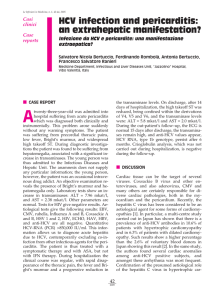
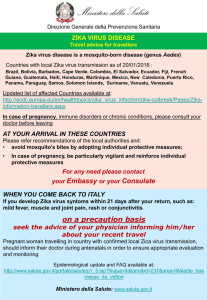
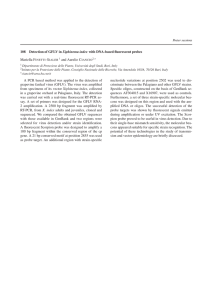

![Yellow-Fever_SA_2012-Ox_CNV [Converted]](http://s1.studylibit.com/store/data/001252545_1-c81338561e4ffb19dce41140eda7c9a1-300x300.png)
